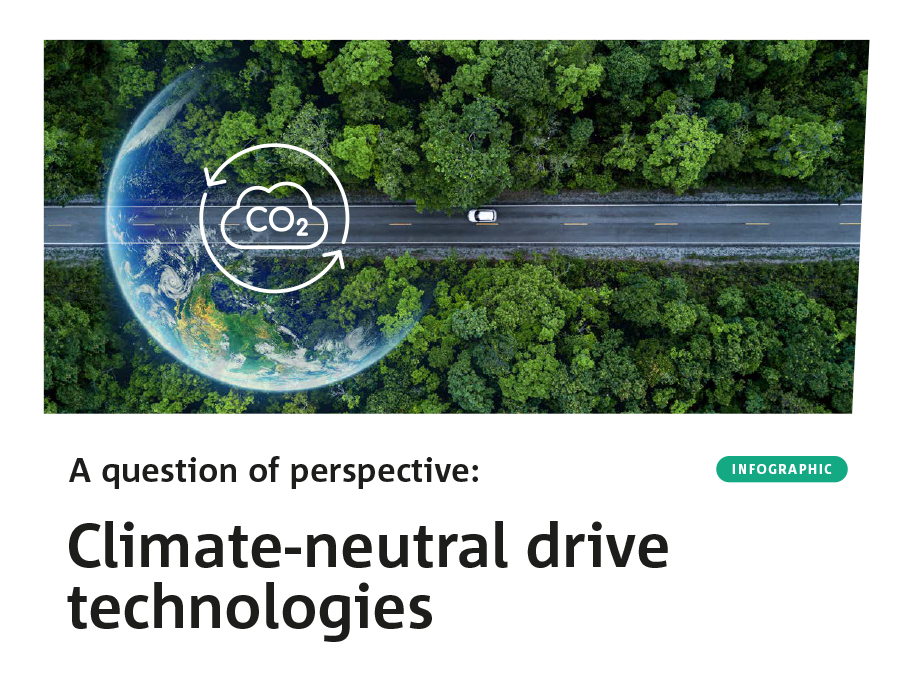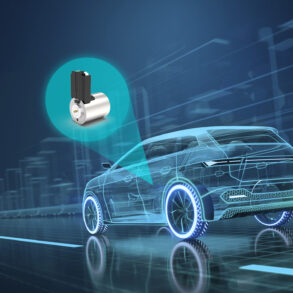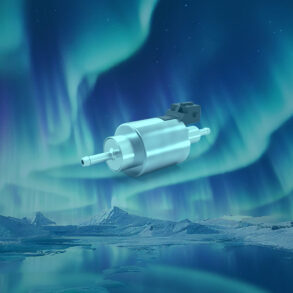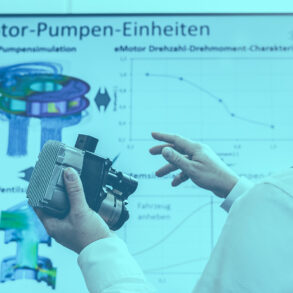Electric drives are playing a key role on the journey toward climate-friendly mobility. However, other technologies are also becoming increasingly important players as we consider a carbon-neutral future. Most of these are based on hydrogen, and Thomas is part of this evolution.
It’s a matter of perspective
One of the fascinating questions in this context is which fuels will allow today’s combustion engines to continue to be used without harming the climate. Billions of drivers around the globe will not and cannot simply swap their car for an electric one overnight. At the same time, both companies and government initiatives are looking at fuel-cell drives and hydrogen combustion engines.
“Alternative fuels are increasingly becoming the focus of people’s interest,” says Martin Schmidt, Director Market & Product Management in Thomas’s Mobility Solutions Customer Unit: “Hydrogen can be used either as a fuel for the fuel cells or inside the hydrogen combustion engine. E-fuels, on the other hand, can power conventional combustion engines, provided that you modify a few components.”
The hydrogen combustion engine: a challenge for engineers
Electrolysis can be used to split water and thus obtain hydrogen in a climate-friendly way, provided that the electricity used comes from renewable energy sources – thus generating so-called green hydrogen. In a hydrogen combustion engine, hydrogen is used as the fuel. The combustion engine converts chemical energy into kinetic and heat energy. Experts expect this drive technology to be used in specialist applications for the time being.
“One such specialist application would be the kind of medium-duty commercial vehicles you get on farms, in the construction industry, or at road maintenance depots, for example,” explains Product Manager Edwin Kreuzberg. “This is why we’re currently taking part in an industry project called „WaVe“, which is being funded by the German Federal Ministry for Economic Affairs and Energy. It involves 20 partners from business and industry joining forces to develop a prototype medium-duty vehicle equipped with a hydrogen combustion engine.”
“WaVe” offers the ideal environment for Thomas to demonstrate its capabilities and expertise as an innovator, because burning hydrogen poses particular challenges for designers. Either it is liquefied at -253°C and heated prior to combustion so as to be delivered as a gas, or it is kept in its gaseous state under extreme pressure. The situation is made even more complex by the fact that hydrogen is the lightest element there is and will escape through even the tiniest gaps. “Because hydrogen is highly explosive when combined with oxygen and an ignition source, we’re developing special pressure control and shut-off valves,” Kreuzberg says. “They will regulate the pressures inside the fuel system precisely and seal off the whole system so it’s 100% leak-tight.”
E-fuels: turning carbon dioxide into a fuel
So-called e-fuels are one alternative for conventional combustion engines. “They’re a highly promising option,” Schmidt explains. “You can use the Fischer-Tropsch process to make artificial fuels for standard combustion engines. We’re already busy modifying our products so that they can also run on fuels like these. A corresponding fuel-dosing pump is already available, with more applications set to follow very soon.”
What makes these kinds of e-fuels especially attractive is the fact that CO2 is extracted from the air to make them. They can also be used in normal combustion engines and are supplied, transported, and put into fuel tanks in more or less the same way as everyday gasoline.
Climate-neutral? It’s a matter of perspektive
Says Schmidt: “If you just look at tank-to-wheel, i.e., from the point at which energy is absorbed to when it is converted into kinetic energy, only the electric drives and fuel-cell technology count as zero-emissions. This is because the hydrogen combustion engine also generates nitrogen oxides as a waste product besides water.”
However, if one considers the whole chain, including the production of the fuel (well-to-wheel), it becomes clear that hydrogen power is only carbon-neutral if renewable electricity is used to make the hydrogen. The same goes for the source of the electricity used to run the electric vehicle.
E-fuels, by contrast, emit CO2. But if you consider that the CO2 required to produce the e-fuels is taken from the atmosphere or as an industrial by-product, then the technology is entirely carbon-neutral. In other words, the whole thing is already a zero-sum game.
Here too, however, it has to be borne in mind that hydrogen is also used to make e-fuels, meaning that carbon neutrality can only be achieved if this hydrogen is green.
One thing is already clear: There is no single perfect route to climate-friendly mobility. Many different technologies and fuels will be used at the same time, at least during a transitional phase until the main goal is reached.

„
Whatever happens, we’re fully committed when it comes to venturing further down the various paths with our products and expertise.












